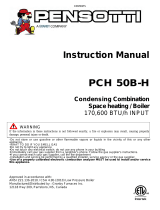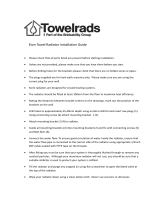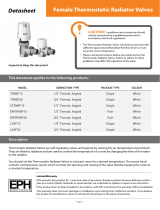
1. An accurate heat loss should be performed to determine the load of the space(s) to be heated.
2. Choose a radiator from the specification chart that most closely matches the heat loss of the
space in which it is to be installed. If a single radiator does not have enough capacity, divide the
load evenly into two or three radiators. (Radiator specifications on the chart are based on 176
degree F average water temperature and 68 degree F room temperature).
3. Radiators should be mounted on an outside wall.
4. Determine if the wall chosen is large enough to accommodate the radiator. If not, multiple
radiators may be required.
5. Radiators must be mounted a minimum of 4” above the floor.
Water Temperature Correction
1. The radiator Btu outputs listed in the specification chart are based on standard conditions, 176
degree F average water temperature and 68 degree F room temperature.
2. Since heating systems may require water temperatures other than those at standard conditions,
correction factors are provided to determine the radiator Btu output at different water
temperatures.
3. Determine the system or design Delta T, the difference between the average water temperature
in the radiator and the desired room temperature in degrees F.
4. Locate the calculated Delta T in the left hand column of the correction factor chart (next page).
Read across to the right to determine the correction factor.
5. Multiply the radiator output (standard conditions from the specification chart) with the correction
factor; the result is the corrected Btu output.
Example:
Calculated Heat Loss, 4,200 Btus
At standard conditions, a DD20.24DBL radiator, which emits 4,296 Btus, would be chosen.
But this system requires an average water temperature 150 degrees F and a room temperature
of 68 degrees F.
150 – 68 = 82 degree F Delta T
82 degree Delta T = .69 correction factor (from correction chart)
DD20.24BDL = 4,296 Btu x .69 = 2,964 Btu (too small to satisfy the heat loss of 4,200 Btus)
Choose a larger radiator
DD20.36DBL = 6,445 Btu @ standard conditions
6,445 x .69 = 4,447 Btus (which satisfies the calculated heat loss of 4,200 Btus)

























